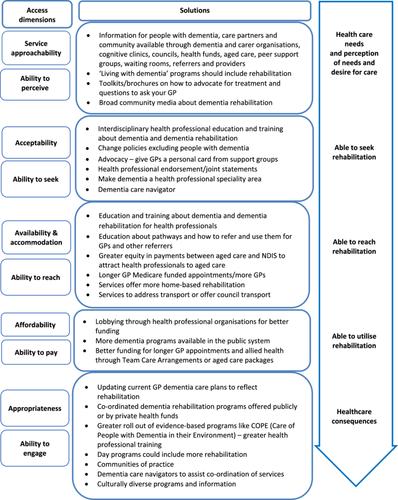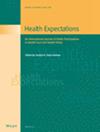People with dementia of all ages have a human right to equal access to quality health care. Despite evidence regarding its effectiveness, many people living with dementia are unable to access rehabilitation for promoting function and quality of life. Conducted in Australia, this study was designed to (1) explore barriers to access to dementia rehabilitation and (2) identify solutions that improve access to rehabilitation.
People living with dementia (n = 5) and care partners (n = 8) and health professionals (n = 13) were recruited nationally. Experience-based codesign across three virtual workshops was used to understand barriers and design solutions to improve access to rehabilitation treatments. Socio-ecological analyses, using the Levesque Access to Health care framework, were applied to findings regarding barriers and to aid selection of solutions.
There was high attendance (92.3%) across the three workshops. Barriers were identified at a user level (including lack of knowledge, transport, cost and difficulty navigating the health, aged care and disability sectors) and health service level (including health professional low dementia knowledge and negative attitudes, inequitable funding models and non-existent or fragmented services). Solutions focused on widespread dementia education and training, including ensuring that people with dementia and their care partners know about rehabilitation therapies and that health professionals, aged care and disability co-ordinators know how to refer to and deliver rehabilitation interventions. Dementia care navigators, changes to Australia's public funding models and specific dementia rehabilitation programmes were also recommended.
Barriers to accessing rehabilitation for people with dementia exist at multiple levels and will require a whole-community and systems approach to ensure change.
People with living experience (preferred term by those involved) were involved at two levels within this research. A Chief Investigator living with dementia was involved in the design of the study and writing of the manuscript. People with living experience, care partners and service providers were participants in the codesign process to identify barriers and design potential solutions.



